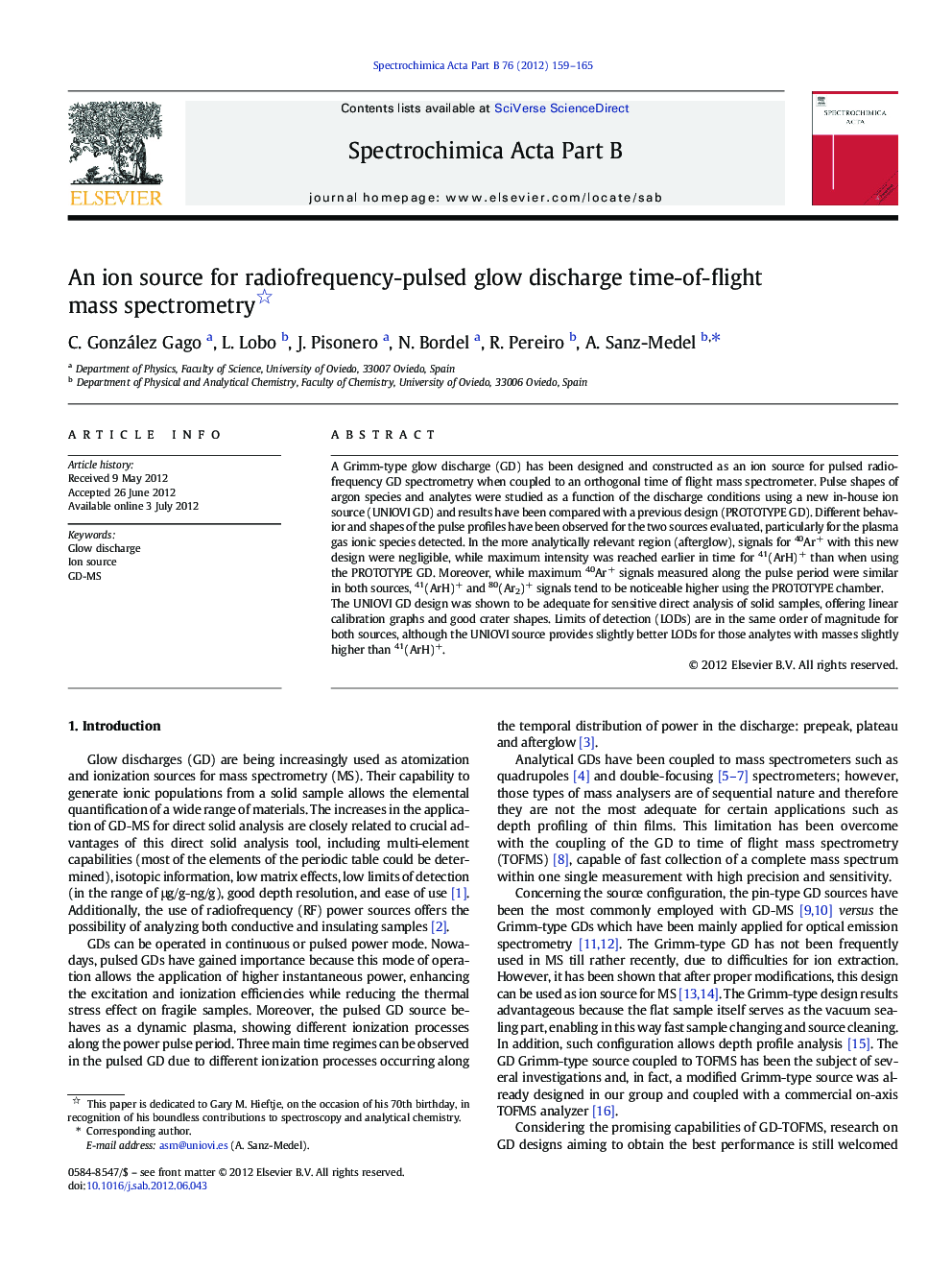| Article ID | Journal | Published Year | Pages | File Type |
|---|---|---|---|---|
| 1239816 | Spectrochimica Acta Part B: Atomic Spectroscopy | 2012 | 7 Pages |
A Grimm-type glow discharge (GD) has been designed and constructed as an ion source for pulsed radiofrequency GD spectrometry when coupled to an orthogonal time of flight mass spectrometer. Pulse shapes of argon species and analytes were studied as a function of the discharge conditions using a new in-house ion source (UNIOVI GD) and results have been compared with a previous design (PROTOTYPE GD). Different behavior and shapes of the pulse profiles have been observed for the two sources evaluated, particularly for the plasma gas ionic species detected. In the more analytically relevant region (afterglow), signals for 40Ar+ with this new design were negligible, while maximum intensity was reached earlier in time for 41(ArH)+ than when using the PROTOTYPE GD. Moreover, while maximum 40Ar+ signals measured along the pulse period were similar in both sources, 41(ArH)+ and 80(Ar2)+ signals tend to be noticeable higher using the PROTOTYPE chamber.The UNIOVI GD design was shown to be adequate for sensitive direct analysis of solid samples, offering linear calibration graphs and good crater shapes. Limits of detection (LODs) are in the same order of magnitude for both sources, although the UNIOVI source provides slightly better LODs for those analytes with masses slightly higher than 41(ArH)+.
► A new RF-pulsed GD ion source (UNIOVI GD) coupled to TOFMS has been characterized. ► Linear calibration graphs and LODs in the low ppm range are achieved. ► Craters with flat bottoms and vertical walls are obtained. ► UNIOVI source can be easily cleaned as it does not require flow tube. ► UNIOVI GD has a simple design and thus its manufacture is easy and cheap.
